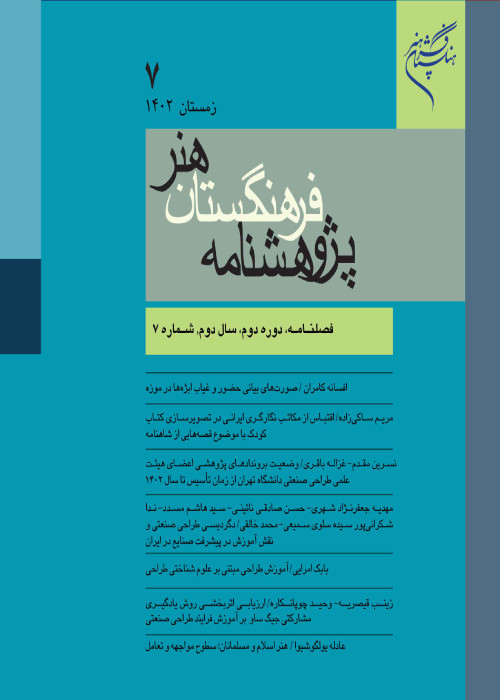The effect of neurological foundations of visual perception on visual modality in graphic design process
The degree of reality of an object’s representation via sign/text is referred to as its modality. The audience also judges the modality of the text in order to comprehend or evaluate its degree of credibility.Such a judgment depends on time, place, and a dynamic, fluid social/cultural milieu. The use of modal verbs in language is well known for establishing or implying the factuality of an action. From a social semiotics perspective, modality is not just limited to linguistic features, and generally speaking, all numerous forms of representing the object have varying degrees of modality. Visual representation is one of the most important of such methods. Different forms of visual modality, such as naturalistic, abstract, sensory, etc. modality, have a substantial impact on the veracity of the object. In general, visual media, as opposed to written texts, are a powerful instrument for representation of the object. Furthermore, the perception and cognition of an object /world depends on a person’s cognitive capacities. In particular, the neurological underpinnings of visual perception, which serve as the foundation for the perception of visual features like form, shape, color, depth, and texture, have a significant impact on a person’s ability to perceive an object or of the world visually. Some of these experimental foundations were described as Gestalt psychology by experimental psychologists in the early 20th century. However, as research in cognitive science and neuroscience has advanced recently, a more thorough understanding of the neurological foundations of visual perception has emerged. This understanding has found expanded applications in theoretical and real-world fields ranging from aesthetics to cognitive design. The visual modality of the object is therefore anticipated to be impacted by these foundations, and audience perception of the value of reality can undoubtedly be significantly influenced by knowledge of these effects and their use in visual/sensory media. It should be noted that, because the concepts and instances associated to the visual object are so broad, the instances meant in this study are graphic works with scientific, cultural, artistic, or commercial topics. This study demonstrated how certain fundamentals and principles of neuro-aesthetics, such as “good continuation,” “isolation,” “symmetry,” and “peak shift” in graphic design, can boost the reality value of different types of visual modality. Furthermore, it showed that their application should be done with knowledge that the profound effects these principles may have on the audience’s visual perception may have a substantial impact on the works’ design quality, attractiveness or sensory impact, and visual modality.
- حق عضویت دریافتی صرف حمایت از نشریات عضو و نگهداری، تکمیل و توسعه مگیران میشود.
- پرداخت حق اشتراک و دانلود مقالات اجازه بازنشر آن در سایر رسانههای چاپی و دیجیتال را به کاربر نمیدهد.



